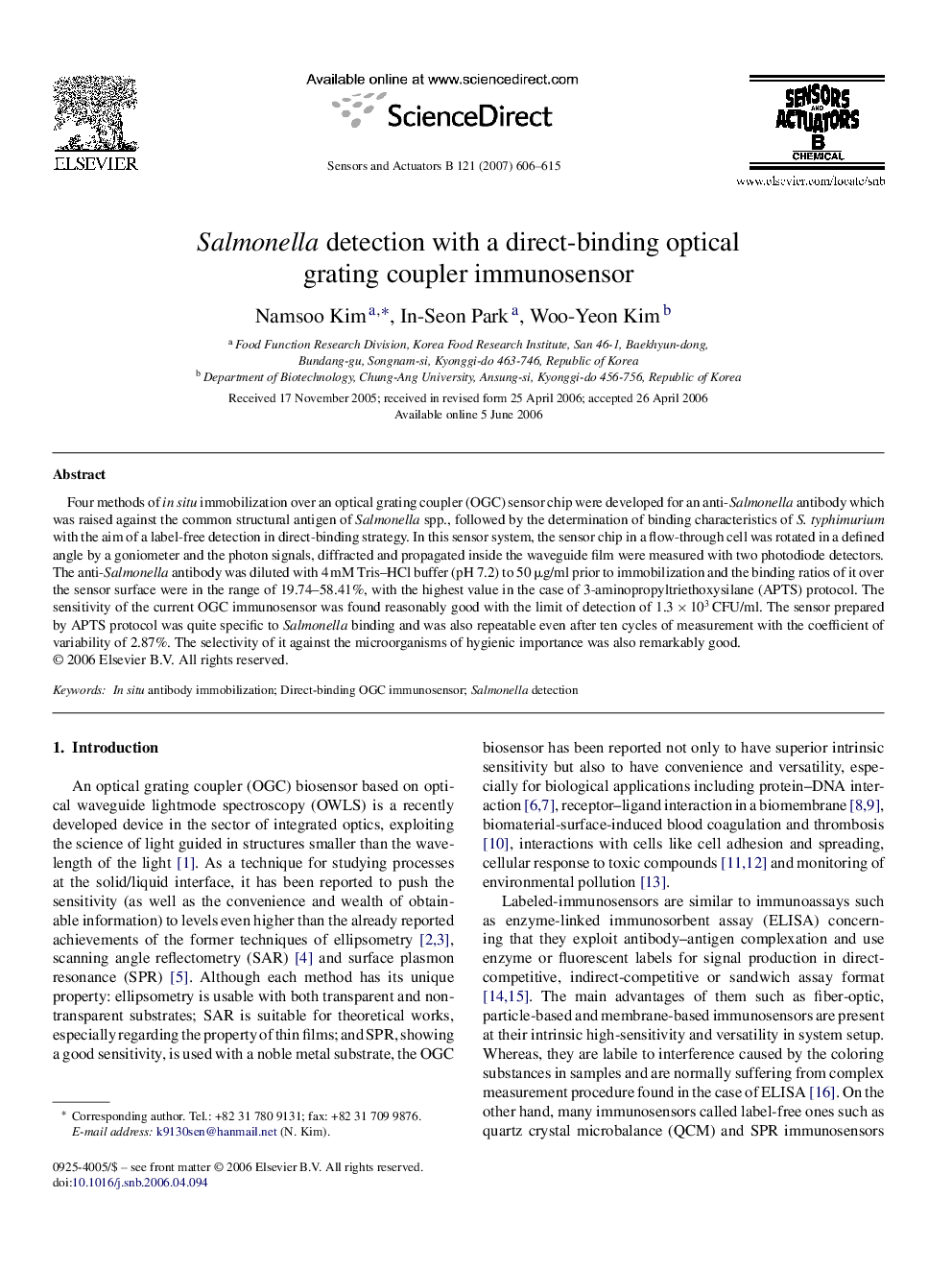| Article ID | Journal | Published Year | Pages | File Type |
|---|---|---|---|---|
| 746935 | Sensors and Actuators B: Chemical | 2007 | 10 Pages |
Four methods of in situ immobilization over an optical grating coupler (OGC) sensor chip were developed for an anti-Salmonella antibody which was raised against the common structural antigen of Salmonella spp., followed by the determination of binding characteristics of S. typhimurium with the aim of a label-free detection in direct-binding strategy. In this sensor system, the sensor chip in a flow-through cell was rotated in a defined angle by a goniometer and the photon signals, diffracted and propagated inside the waveguide film were measured with two photodiode detectors. The anti-Salmonella antibody was diluted with 4 mM Tris–HCl buffer (pH 7.2) to 50 μg/ml prior to immobilization and the binding ratios of it over the sensor surface were in the range of 19.74–58.41%, with the highest value in the case of 3-aminopropyltriethoxysilane (APTS) protocol. The sensitivity of the current OGC immunosensor was found reasonably good with the limit of detection of 1.3 × 103 CFU/ml. The sensor prepared by APTS protocol was quite specific to Salmonella binding and was also repeatable even after ten cycles of measurement with the coefficient of variability of 2.87%. The selectivity of it against the microorganisms of hygienic importance was also remarkably good.
